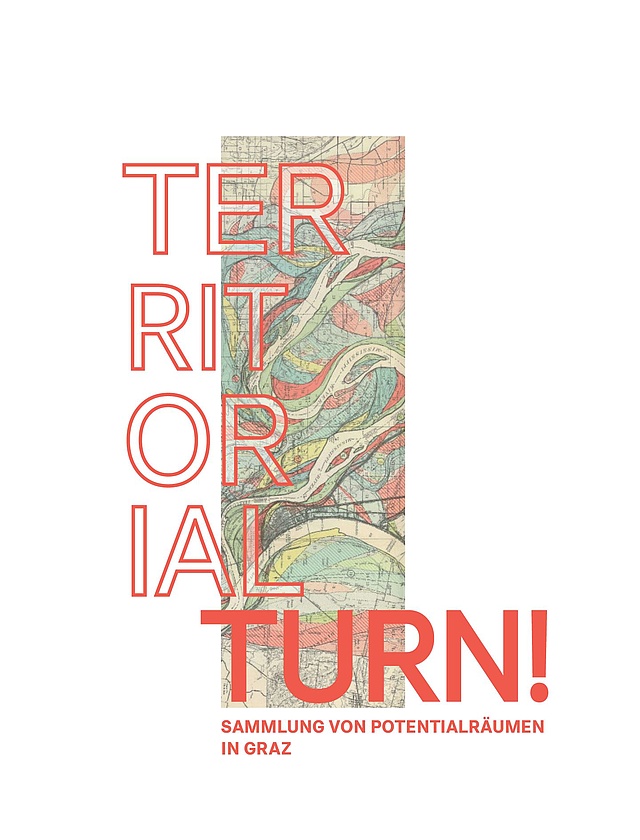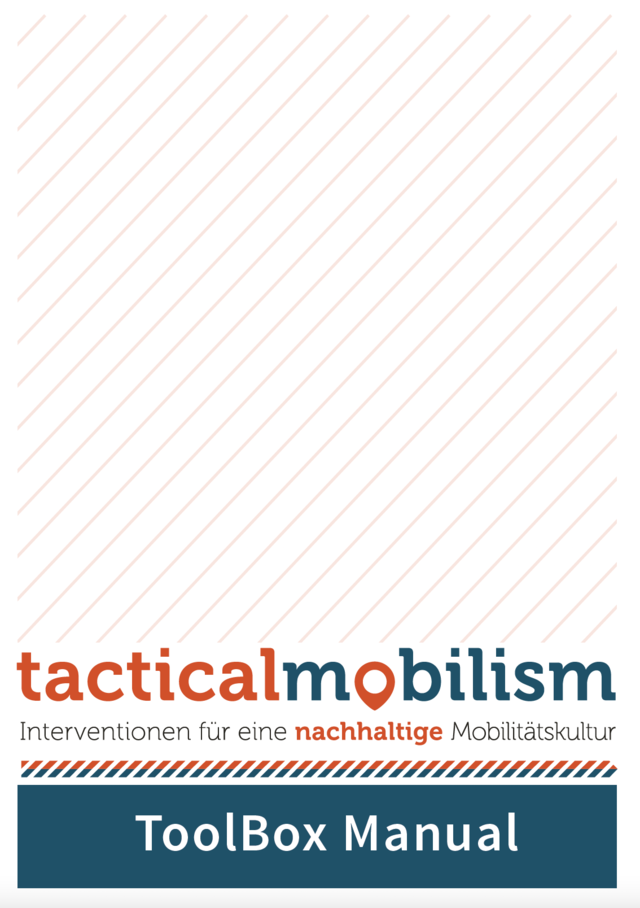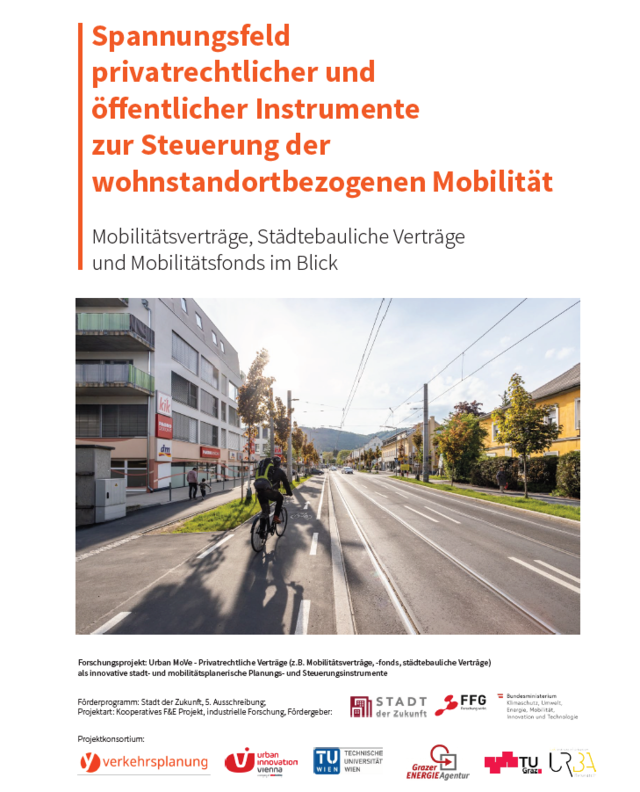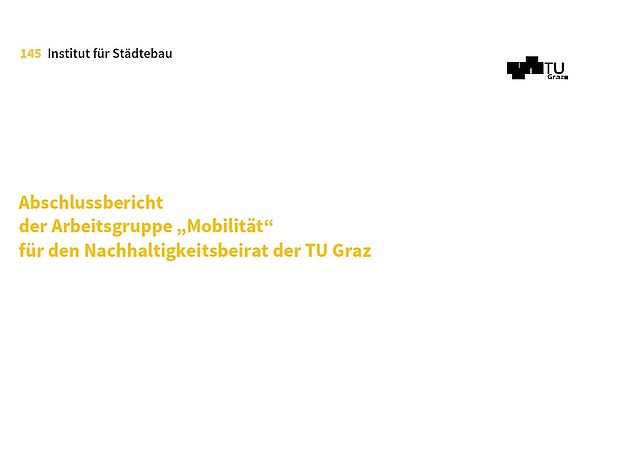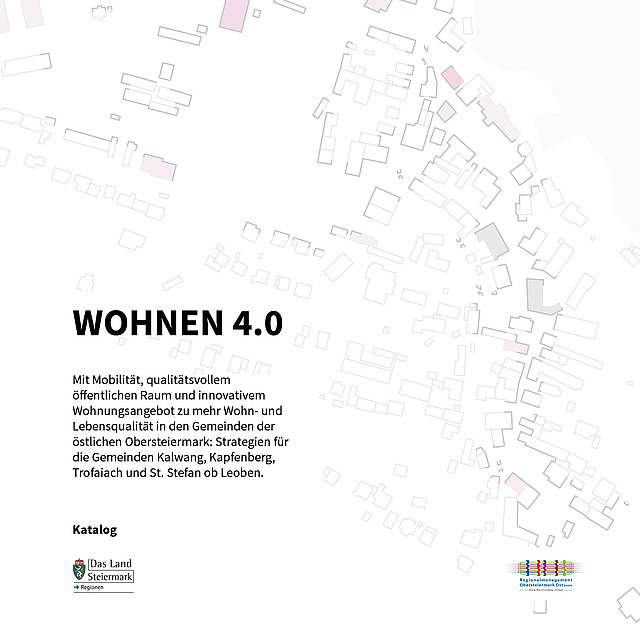Towards Territorial Transition
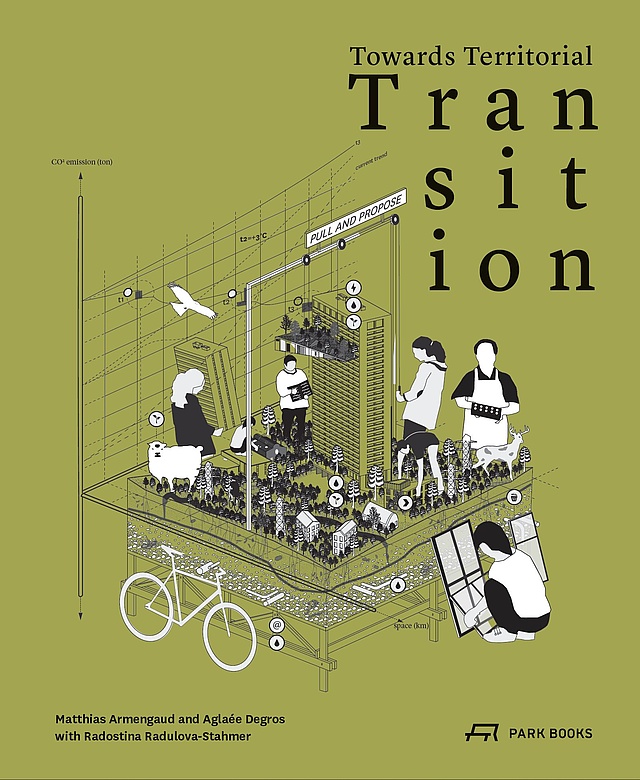
Towards Territorial Transition
Matthias Armengaud and Aglaée Degros with Radostina Radulova-Stahmer
Zürich: Park Books, July 2023
Englisch, 240 pages
ISBN 978-3-03860-305-4
EUR 39,00
Order by publisher
Towards Territorial Transition
presents new spatial strategies, concepts, and approaches for shaping large-scale and transnational developments in architecture and urban design towards decarbonization and ecological transition. The contributions investigate interactions between ecological and resource-related systems and landscapes. They explore potential solutions to address and deal with the dramatic threats posed by climate change, and with the social crisis that may emerge from them.
The book introduces six basic terms of territorial transition—Territory, Scale, Transition, Resource, Platform, and Uncertainty—and visualizes them with spatial strategies elaborated at the École nationale supérieure d’architecture Versailles and at Graz University of Technology. Moreover, it presents a selection of transnational projects of territorial transition, such as Luxembourg in Transition (Luxembourg / France), Grand Genève (Switzerland / France) and Top Noordrand (Belgium / Netherlands).
Collection of potential spaces in Graz
Collection of potential spaces in Graz
Aglaée Degros, Anna Bagarić, Marie-Theres Schwaighofer (publ. | eds.)
Graz, Institute of Urbanism, TU Graz, 2022
German, 78 pages, paperback
PDF
A collaborative extension of the exhibition Territorial Turn invited Graz residents to search for places, street spaces or other urban situations in the city of Graz that require action and to send these potential spaces as photos to the Institute of Urbanism in order to jointly develop new spatial proposals for redesign in the sense of the Territorial Turn. The call for participation met with great interest among the people of Graz. With a total of 103 photos sent in, there is now a collection of public urban spaces that on the one hand show the need for action in Graz, and on the other hand, with the help of descriptions by the senders, also show ideas on how these existing potentials can be exploited. Based on the territorial vision for Graz presented in the exhibition, new and future-oriented possibilities for sustainable and equitable urban spaces were developed from potential-rich situations. By changing the focus from motorised individual mobility to an ecologically sustainable and active mobility, visions of these public spaces to quality living spaces for humans and animals were shown. On the one hand, collages were created that illustrate how an equitable, sustainable and collaborative interstitial space can be created by improving the territorial system. On the other hand, the workshop for theatre and socio-culture "InterACT" participated in the call and visualised transformations of submitted streets in a theatrical way on 2 July 2022 by occupying parts of the streets for a few hours and focusing on people instead of traffic.
The project Tactical Mobilism aims to establish time-limited, simple and cost-effective interventions in the field of transport. In particular, the associated, joint and participatory development and testing of such interventions in public space in a so-called real laboratory opens up new perspectives, stimulates the necessary rethinking among the actors and can trigger a change in mobility culture. The spatial intervention mechanisms deliberately set in the project Tactical Mobilism aim at improving their integration into existing planning and decision-making processes in order to create space for inclusive and sustainable mobility and quality of stay. The city of Villach, as project partner and pilot city, provided the space for a first Tactical Mobilism reallaboratory within the framework of the project, so that the experience gained here can serve as a model and example for other cities in Austria and beyond. The follower cities can learn from the findings in processes and concepts, integrate them themselves and use them accordingly for their transformation and innovation processes. The structural-haptic elements tested in Villach as well as process-related findings have been summarized in this document. This ToolBox Manual of the Tactical Mobilism project collects the lessons learned from the project and the pilot intervention in Villach. The method bundles for planning, implementation, evaluation and participation of Tactical Mobilism interventions as well as the constructional-haptic toolbox consisting of elements and materials for such interventions are intended to serve potential follower cities as a knowledge base and manual for the conceptualization and implementation of further Tactical Mobilism reallabs.
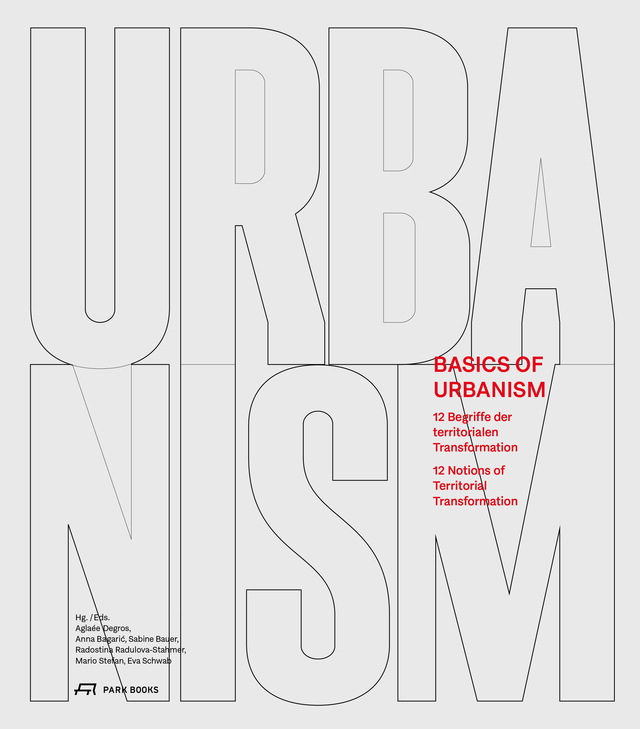
Basics of Urbanism
Aglaée Degros, Anna Bagarić, Sabine Bauer, Radostina Radulova-Stahmer, Mario Stefan, Eva Schwab
Zürich: Park Books, September 2021
Deutsch/Englisch, 244 Seiten, broschiert
ISBN 978-3-03860-260-6
EUR 38,00
Order by publisher
Urban design today is facing a multitude of challenges. Using twelve key terms, this book connects these challenges to projects in this field. It introduces concepts. presents possible solutions, and describes implementation processes. A special focus is put on the interaction of the built environment with living systems—an approach that is slowly gaining acceptance within the urban design community and that is setting aside a primarily building-oriented practice in favor of an increased appreciation of public space.
Basics of Urbanism defines and illustrates parameters with a clearly territorial approach to urban design. Space between buildings is treated as an essential structure for environmental and social change within small-scale neighborhoods and blocks, as well as at the level districts and even entire cities. This approach includes forward-thinking temporal aspects as well as the implementation of existing resources in the creation of new spatial qualities.
With contributions by Markus Bogensberger, Aglaée Degros, Eva Schwab, Marcel Smets. Interviews with Blaz Babnik, Stefan Bendiks, Ilka Cerpes, Harald Grießer, Gernot Kupfer, Robert Loher, Claudia Nutz, Ans Persoons, Katarina Psegionnaki, Michael Ryckewaert, Rudolf Scheuvens, Carol Schmitt, Marcel Smets, Maarten van Aacker, Bernd Vlay, Johann Zancanella, and Sibylla Zech.
Aglaée Degros is an architect and urban designer, and a founding principal of Brussels-based design firm Artgineering. She is also director of and a professor at the Institute of Urbanism, TU Graz.
Anna Maria Bagarić is an architect working as teaching and research assistant at the Institute of Urbanism, TU Graz.
Sabine Bauer is an urban design researcher who works as teaching and research assistant at the Institute of Urbanism, TU Graz.
Radostina Radulova-Stahmer is an architect and researcher who works as teaching and research assistant at the Institute of Urbanism, TU Graz.
Mario Stefan is an architect with Graz-based studio Nussmüller Architekten. Prior to this he worked as a student assistant at the Institute of Urbanism, TU Graz 2015–20.
Eva Schwab is a landscape designer and deputy director of the Institute of Urban Design, TU Graz.
Spannungsfeld privatrechtlicher und öffentlicher Instrumente zur Steuerung der wohnstandortbezogenen Mobilität
Mobilitätsverträge, Städtebauliche Verträge und Mobilitätsfonds im Blick
Praxisorientierter Leitfaden des Forschungsprojektes Urban MoVe - Privatrechtliche Verträge (z.B. Mobilitätsverträge, -fonds, städtebauliche Verträge) als innovative stadt- und mobilitätsplanerische Planungs- und Steuerungsinstrumente.
Funding programme: Stadt der Zukunft, 5. Ausschreibung; Fördergeber: BMK / FFG
Project consortium: yverkehrsplanung GmbH (Lead), Institut für Städtebau der Technischen Universität Graz, Forschungsbereich Bodenpolitik und Bodenmanagement der Technischen Universität Wien; Grazer Energieagentur GesmbH, UIV Urban Innovation Vienna GmbH
Housing is becoming increasingly important as a central field of action for climate protection measures. For a holistic climate- and energy-efficient planning of the residential location, early consideration and planning of mobility concerns and innovative mobility solutions is indispensable, since approx. 80% of all journeys begin and end at the residential location.
This is where the Urban MoVe research project comes in. With the help of the analysis and evaluation of first practical examples (Graz, Vienna), the research question was pursued to what extent private-law instruments (e.g. mobility contracts, funds, urban development contracts) between municipalities and project applicants are suitable as steering instruments for an interlinked, future-oriented urban and mobility planning and how a new and further development of these instruments can look against the background of mobility innovations (e.g. sharing & electric mobility, mobility as a service).
The project aims to support a change of perspective from monomodal car-oriented to multimodal mobility. It will be shown how sustainable mobility related to residential locations can be implemented in a binding manner and addressed and controlled at an early stage through the further development of sovereign as well as private law instruments with the inclusion of the diverse planning actors.
Mobilität 2030+ an der TU Graz
Mitglieder der AG Mobilität:
Stellvertretende Vorsitzender des Nachhaltigkeitsbeirats: Günter Getzinger
Institute of Urbanism:
Aglaée Degros, Sabine Bauer, Markus Monsberger
HTU Graz:
Carina Mazelle, Valentin Gritsch
Betriebsrat der TU Graz: Herbert Penker, Ivonne Simon-Reitermayer
OE Gebäude und Technik (beratend):
Mario Hafner
Mobility is the second largest cause of greenhouse gas emissions at Graz University of Technology, with the largest share of this being attributable to business trips.
Two thirds of the students and slightly more than half of the staff already use emission-free mobility modes, walking or cycling. In order to achieve further savings with the goal of achieving climate neutrality in the mobility sector, further measures are needed. These measures include further cycling promotion projects, the promotion of electromobility and the further reduction of car parking permits on campus.
The next step is to consolidate and optimize the relocation (of business trips) by means of teleworking in everyday life. But the greening of business travel must also be pushed forward so that in future, in addition to cost and time factors, aspects of sustainability will also be taken into account as a basis for decision-making on business travel.
In addition, the development of supplementary projects to establish secure and efficient connections in the vicinity of the university locations is essential. This concerns on the one hand effective bicycle path connections between the Graz research and educational institutions, but also an increase in pedestrian friendliness by creating a network of attractive public spaces around the city's campuses.
Wohnen 4.0
Institute of Urbanism:
Eva Schwab/Sabine Bauer/Cornelia Pregartbauer/Mario Stefan/Aglaée Degros
Kampus Raumplanungs- und Stadtentwicklungs GmbH:
Daniel Kampus/Bettina Burgsteiner/Csilla Huss/Katja Hofmeister
Imprint
TU Graz/Institute of Urbanism
Rechbauerstraße 12/II
A-8010 Graz
Self-published
Housing development in the 21st century faces new challenges: Globalisation, centralisation, different concepts of life, the dissolution of social conventions and demographic change are probably the biggest. On the other hand, there is the question of how to guarantee maximum quality of life and access to the necessary public facilities to residents of small towns and communities by means of new forms of housing.
The "Wohnen 4.0" project seeks answers to this question. On behalf of the Regional Management Upper Styria East, the Institute of Urbanism of Graz University of Technology and Kampus Raumplanungs- und Stadtentwicklungs GmbH are developing possible solutions: Centre strengthening and conversion, mobility and sustainable development, accessibility of living space and innovative forms of housing for the eastern part of Upper Styria are the main focus. The exhibition, which will be shown in Kalwang, Kapfenberg, Leoben, Trofaiach and St. Stefan ob Leoben, presents specific development strategies and innovative housing projects by local architects.
The project "Wohnen 4.0" is financed by the regional department of the province of Styria with funds from the Styrian provincial and regional development law.
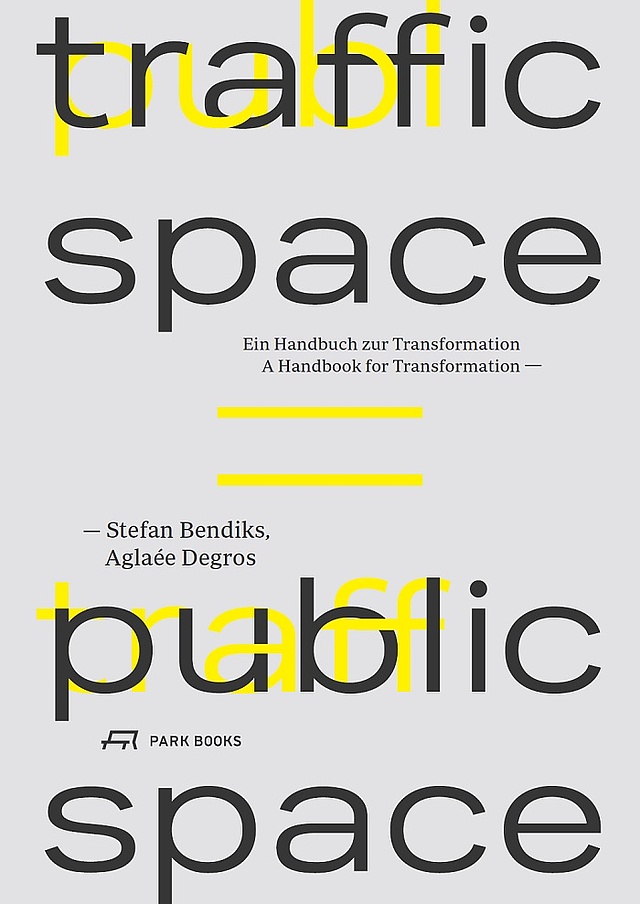
Traffic Space is Public Space
Stefan Bendiks/Aglaée Degros
Zurich: Park Books, 2019
German/English, 224 pages, softcover
ISBN 978-3-03860-165-4
EUR 38.00
Order by publisher
Public space is essential to vital cities and inclusive, resilient societies. But how might we create more of it in our densely packed cities? The solution is lying before us: the vast amount of space that can be reclaimed by transforming areas dominated by cars and now congested with traffic into truly public spaces. But before we can do that, we must work toward a better balance between mobility and place: more room for pedestrians and cyclists, much less for cars and trucks transporting both people and goods.
Traffic Space Is Public Space is no traditional book on planning principles in urban design. It won’t give you a rigid set of rules. But it will introduce you to new approaches and strategies to trigger change: networking, shared use of space, a circular urban metabolism and the revitalization of local economies, a participative process involving local businesses, and an appropriate aesthetic.
Packed with inspiring projects from around the world, including some from the authors own urban planning and design firm, Artgineering, Traffic Space Is Public Space offers forward-looking insights into how we can increase the quality of space and thus life in in our cities.
Stefan Bendiks is an architect and urban designer, and co-founder of Brussels-based planning and research firm Artgineering. He also lectures at various European universities.
Aglaée Degros is an architect and urban designer, and a founding partner of planning and research firm Artgineering in Brussels. She also teaches as a professor at the Institute of Urbanism, Graz University of Technology.
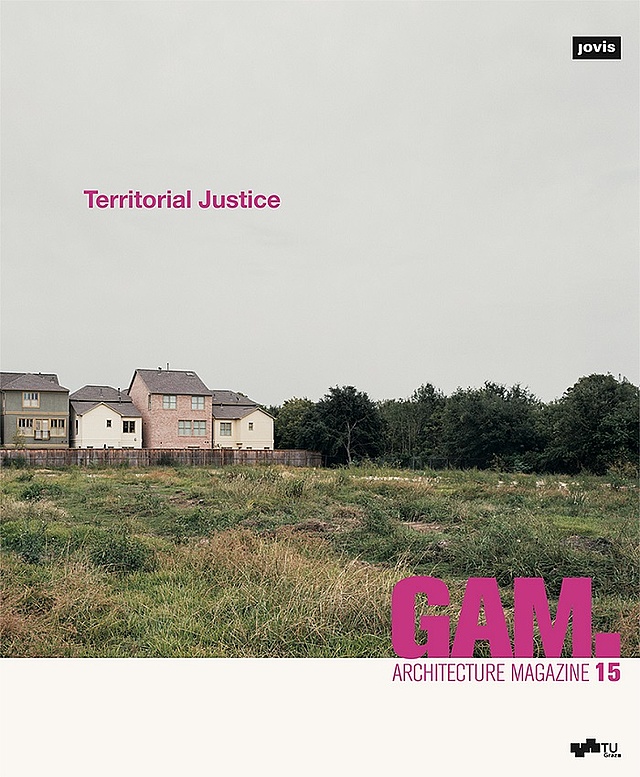
GAM.15 Territorial Justice
Berlin: Jovis Verlag, 2019
German/English, 308 pages, paperback
ISBN 978-3-86859-855-1
EUR 19.95
Order by publisher
Guest editors: Aglaée Degros, Eva Schwab
In the face of growing inequalities in access to and distribution of resources, territorial justice has (once again) become a current issue and task in the fields of architecture, planning and urbanism. GAM.15 – Territorial Justice is dedicated to rural and peripheral spaces that have until now received little attention from this discourse. The contributions in GAM.15 – coming from perspectives of urbanism, landscape architecture, regional planning, sociology, and geography – show spaces in transformation and present ideas for what forms spatial justice can take. Current descriptions of disadvantaged areas make clear that any policy aimed at eliminating or combating injustice would do well to take on specific socio-spatial – i.e. territorial – points of view, and as such to rely on the expertise of planners and designers.
Table of contents | book review
With contributions by
Erich Biberich, Tatjana Boczy, Ruggero Cefalo, Martin Courtz, Aglaée Degros, Nicolas Escach, Sébastien Este, Michael Friesenecker, Roland Gruber, Vincent Van der Heyde, Hans Hortig, Yuri Kazepov, Andreas Lechner, Ute Mahler, Werner Mahler, Don Mitchell, Michael Nève de Mévergnies, Viviana Rubbo (Urban Reports), Eva Schwab, Bernardo Secchi, Hille von Seggern, Emanuele Sommariva, Isabel Stumfol, Pierre Veltz, Paola Viganò, Michael Wagner, Michael Woods, Sibylla Zech
Planning Capital Cities
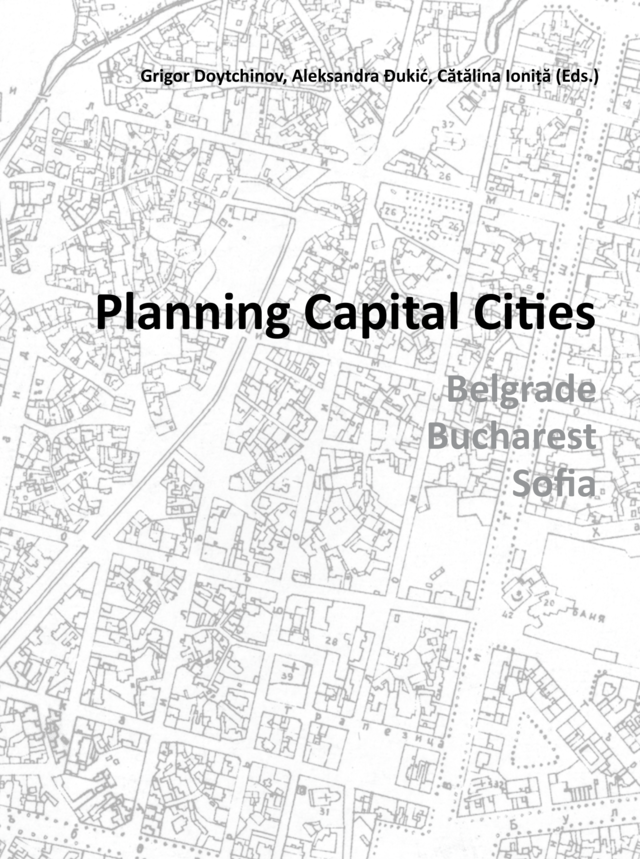
Planning Capital Cities. Belgrade, Bucharest, Sofia
Grigor Doytchinov/Alexandra Dukić/Cǎtǎlina Ionitǎ (eds.)
Graz: Publishing Company of Graz University of Technology, 2015
English, 289 pages, paperback
ISBN 978-3-85125-398-6
EUR 32.00
Order by publisher
The aim of the publication Planning Capital Cities is to detect some uniform ideas in the urbanism of Belgrade, Bucharest, and Sofia and to point out equal ideas as marks of this uniformity. The assumption that the urbanism of the three capitals shows semantic links is based on some frame conditions, offering arguments for a cultural unification: the primary factor for the similarity is the regional neighborhood as a factor for coexistence and interference. The secondary factor is the comparable urban history. Both factors are a precondition for a similar urban spatial organization and a cultural heritage in its broad sense. Some historical facts offer convincing arguments for the analogy and, respectively, their differentiation from the Central and Western European capitals and examination as related objects of research: the Ottoman rule as the pre-modern period, the delayed infiltration of the capitalist economy and nation-building, the European cultural influences, dominating since the nineteenth century, and finally the unstable geopolitical order of the region, which reflects on the principles of urbanism. The review is carried out chronologically and takes a phased approach to highlighting the approximation and dissociation of the ideas in the urbanism of the capital cities.
The authors or editors Mihai Alexandru, Aleksandra Djukić, Grigor Doytchinov, Maria Duda, Hristo Ganchev, Harald Heppner, Cǎtǎlina Ionitǎ, Eva Vaništa Lazarević, Mirjana Roter-Blagojević, Nikola Samardžić, Monica Sebestyen, Angelica Stan, Miruna Stroe, Hannes Swoboda, Andrea Udrea, Yani Valkanov, and Milena Vukmirović.
Grigor Doytchinov worked in the Institute of Urban Design at Graz University of Technology starting in 1992 and as of October 2004 assumed the role of university professor before retiring in September 2015.
